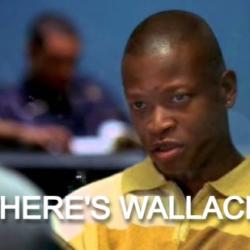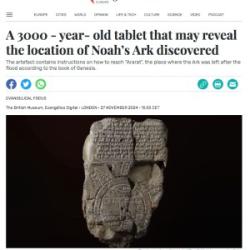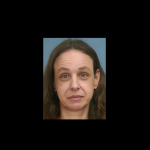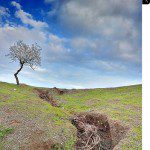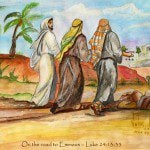“Independent Network Christianity” is a new name for a very old American tradition. Bob Smietana summed up INC Christianity last year in an interview with scholars Brad Christerson and Richard Flory:
Largely behind the scenes, a group of mostly self-proclaimed “apostles,” leading ministries from North Carolina to Southern California, has attracted millions of followers with promises of direct access to God through signs and wonders.
Their movement, which Christerson and Flory called “Independent Network Charismatic” or “INC” Christianity, has become one of the fastest-growing faith groups in the United States. Apostles like Bill Johnson, Mike Bickle, Cindy Jacobs, Chuck Pierce, and Ché Ahn claim millions of followers. They’re also aided by an army of fellow ministers who fall under their “spiritual covering.”
Many of these apostles run megachurches, including Bethel Church in Redding California, HRock Church in Pasadena, and the International House of Prayer (IHOP) in Kansas City. But their real power lies in their innovative approach to selling faith. They’ve combined multi-level marketing, Pentecostal signs and wonders, and post-millennial optimism to connect directly with millions of spiritual customers. That allows them to reap millions in donations, conference fees, and book and DVD sales. And because these INC apostles claim to get direction straight from God, they operate with almost no oversight.
Yeah, those folks. The hacks and hucksters fleecing the gullible, desperate, and resentful Charismanews crowd. They’re harnessing the power of recent developments like multi-level marketing and the Internet to do the same things that earlier generations of Christianity INC swindlers did through then-new technologies like radio and destination resorts.
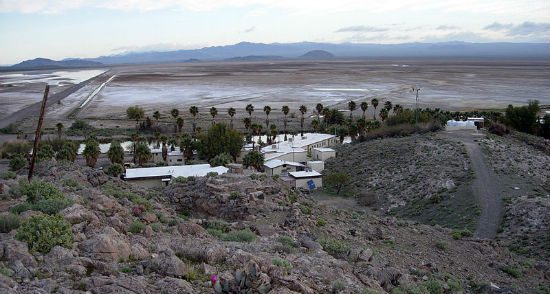
Consider, for instance (via Undine) “The Strange and Mysterious Town of Zzyzx” in California. This weird destination in the Mojave Desert was the creation of Curtis Howe Springer — radio evangelist, Billy Sunday apprentice and, according to the American Medical Association, “king of the quacks.” (Here’s yet another fun account of Springer’s saga, including audio from Springer’s radio program — wherein I learn that he pronounced it “ZY-zex.”)
What’s the difference between Springer and people like Cindy Jacobs or Mike Bickle? Basically that Springer at least had the decency to build underground boilers to make his bogus “hot springs” comfortably hot.
He seems to have been an amiable quack. Maybe the “miraculous” antacids he peddled turned out to be nothing more than baking soda, but at least baking soda isn’t dangerous or totally ineffective for that purpose.
And Springer was, in general, a much more congenial grifter than the current generation who have taken up his mantle. He wasn’t trying to conquer the seven mountains of society to create a theocracy. His self-improvement shtick wasn’t fueled by demonizing others.
The startling thing, when reading about Springer, is the dates involved. His story seems like a period piece — a little bit Barnum, a little bit Harold Hill from The Music Man, a little bit of Road to Wellville. But Zzyzx was a profitable enterprise until the 1970s, and Springer himself was still “ministering” up until his death in 1985. Springer acknowledged the timelessness of his form of ministry when he referred to himself as “the last of the old-time medicine men.”
Springer’s self-proclaimed medical expertise, and his flair for self-promotion, made him the poster-boy for the American Medical Association’s early efforts to crack down on unlicensed quackery. From Wikipedia:
After he applied for airtime on WGN radio [in 1934], the station contacted American Medical Association’s Bureau of Investigations for information regarding Springer. The AMA and Better Business Bureau quickly began to take note of his completely falsified education record. Before long, Springer had been labeled as a notorious fraud and doctor-impersonator by the medical community. An extensive article in the September 14, 1936 edition of Journal of the American Medical Association titled “Curtis Howe Springer: A Quack and His Nostrums” detailed his exploits and lack of education.
This didn’t stop Springer, or even slow him down. By the time he started building Zzyzx a decade later, his syndicated radio program was being carried on 221 stations across America and another 102 stations internationally. The “king of the quacks” also typified the kind of Independent Network Christianity that was beginning to dominate the then-dominant mass medium of radio. Springer and many of the other most profitable and most popular radio preachers were to the church exactly what Springer was to the medical profession: fraudulent, unlicensed, unaccredited impersonators profiting from their resemblance to the real thing.
The explosion of such radio hucksters led the FCC to follow the example of the AMA and attempt to crack down on the quacks. But FCC there doesn’t mean the Federal Communications Commission. It refers to the Federal Council of Churches. “Protestant denominational leaders argued for regulations that would restrict access to the radio broadcast spectrum [for] independent evangelical preachers who were unaccountable to any denominational entity.”
That’s from the Wikipedia entry for the National Religious Broadcasters — which Wikipedia warns “has many issues,” including that it “contains content that is written like an advertisement for the NRB.” It does indeed, portraying Springer and his fellow unaccountable entrepreneurs as righteous Davids standing for God against oppressive persecution at the hands of the denominational Goliaths. The tone of the entry is what Christian Smith described as the hallmark mood of white evangelicalism: “embattled and thriving.”
I’d amend Smith’s description to aggrieved and thriving, but yes.
This tone might not meet Wikipedia’s standards for its articles, but it captures the essence of this important moment in white evangelical history. The NRB was created out of the same misplaced persecution complex that still defines white evangelicalism. It was — and still is — the embodiment of the politics of resentment fueled by that aggrieved sense of imagined persecution.
After the FCC got the largest radio networks to reign in the INC charlatans and “old-time medicine men,” restricting their ability to buy airtime on the biggest stations: “150 evangelical Christian broadcasters and church leaders held a series of meetings which led to the formation of the National Religious Broadcasters. In the fall of 1944, members of the NRB adopted their Constitution, Bylaws, Statement of Faith, and Code of Ethics. And thus began a multi-year effort by NRB to build credibility for evangelical broadcasters, to secure available public interest slots, and to overturn the ban on the purchase of radio airtime for religious broadcasting.”
The term “evangelical” is doing a lot of work there. The NRB’s creation myth wants you to read that word and think of Billy Graham. That’s massively misleading. To really understand why the association was founded, and what it stands for, you should read that word and think of Curtis Howe Springer. (Or, for a still-living example, David Barton.)
This issue-laden Wikipedia entry also inadvertently captures another key fact about the founding of the NRB: It was conceived as an alternative to the National Council of Churches. The NRB is formally a trade association. Functionally, it is a magisterium — an ecclesiastical body that serves as a denomination for non-denominational INC Christians.
Anyway, the cops finally busted Brother Springer for telling fortunes better than they do. The feds shut down Zzyzx Mineral Springs and Health Resort in 1974 since the mining claim Springer had purchased back in the ’40s didn’t permit him to occupy the land or to build on it. Springer decamped to Las Vegas, where he spent his final decade writing fierce editorials decrying “The Legal Rape of Zzyzx.” He had, at last, come to share the belligerent, resentful persecution complex that had launched the NRB all those years ago. He was no longer thriving, but he had come to be aggrieved.
In 1976, the site became California State University’s Desert Studies Center and now serves as a research and educational outpost for studying desert environments.
If somebody wants to make a movie about Zzyzx, I’ll watch it (as long as the faculty of Liberty University’s Cinematic Arts Department are not involved). I’m thinking Sam Rockwell, maybe, as Springer.









